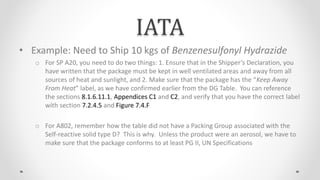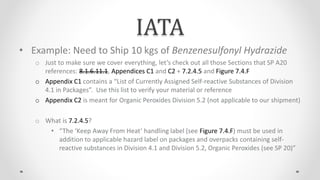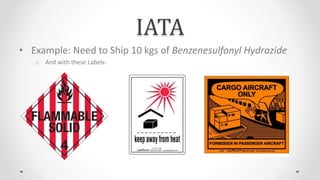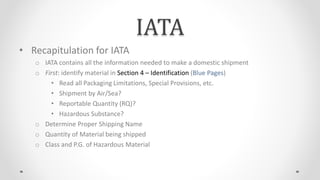The IATA hazardous materials certification training program introduces regulations for the transport of dangerous goods, emphasizing the differences between IATA standards and U.S. federal regulations (49 CFR). It outlines the training scope, including packaging, labeling, bill of lading preparation, and testing, while highlighting compliance with international and national regulations. Additionally, the document details variations by country and carrier, the importance of the IATA manual for identifying dangerous goods, and specific packing instructions for air transport.



































































